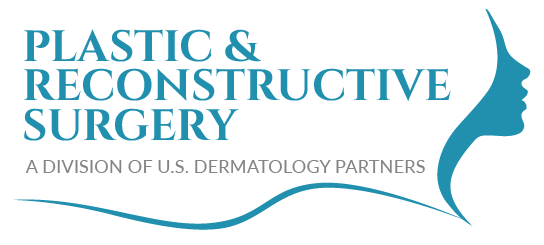Revision Rhinoplasty
Rhinoplasty can be an extremely challenging plastic surgery procedure. The nose is made up of numerous different types of tissues, it provides structure and shape for the entire face, and it’s located front and center for everyone to see. There’s no hiding the nose you were born with or the results of rhinoplasty. Not to mention the nose needs to function properly, so we can breathe. A good plastic surgeon needs to provide treatment that delivers the desired results of rhinoplasty without negatively impacting nasal function. Additionally, the swelling and inflammation associated with surgery can make it extremely difficult to know exactly what the nose will look like following recovery. With all of these challenges at play, it’s no surprise that surgeons don’t always get rhinoplasty exactly right on the first try. For this reason, some patients may want to consider revision rhinoplasty to ensure they achieve their desired goals. On this page, you can learn more about revision rhinoplasty, its benefits, and considerations. If you’re interested in learning more about revision rhinoplasty or other options, please don’t hesitate to reach out to schedule a consultation at Plastic & Reconstructive Surgery – a division of U.S. Dermatology Partners.
What Is Revision Rhinoplasty?
Following a primary rhinoplasty procedure, revision rhinoplasty may be recommended if the patient didn’t achieve the desired results after the original rhinoplasty, surgical complications prevented the completion of the original procedure, or there are functional or breathing challenges following treatment. Because primary rhinoplasty often requires the removal and reshaping of existing bone, cartilage, and soft tissue, revision rhinoplasty surgery almost always requires additional grafting. Cartilage and soft tissues are usually removed from the ear or ribs and shaped to be placed in the nose. This allows us to use your own tissue and avoids having to use foreign material in your nose. To minimize scarring and adverse effects, the procedure is usually performed by placing incisions over the existing surgical site. However, most revision rhinoplasty does require an open surgical approach, which means the previous incisions may have to be reused. Your surgeon will still do their utmost to conceal the incisions within natural nasal folds.
Benefits of Revision Rhinoplasty
While revision rhinoplasty shouldn’t be undertaken casually, there are many benefits to receiving this procedure, including:
- Improving appearance and confidence related to imperfect primary rhinoplasty results.
- Restoring or improving nasal function.
- Completing procedures that were not finalized due to complications.
- Repairing scar tissue from prior rhinoplasty procedures.
- Replacing tissues that were damaged or weakened by previous procedures.
- Correcting deviated septum, external valve collapse, narrowed airways, and other functional issues.
Recovery After Revision Rhinoplasty
Before beginning the procedure, your surgeon will provide precise instructions to help you heal and recover quickly. Immediately following your surgery, you will notice bruising, swelling, and pain that will last for several days. You should begin to improve within the first week of treatment and notice continued improvement for several months. After the first two months, you may have some swelling, but you should have a good idea at this point of what your results will look like.
While your surgeon will provide individual instructions, some basic aftercare steps for recovery following revision rhinoplasty include:
- Plan to take at least one week off work and other daily tasks to heal and rest.
- Take pain relievers as recommended or prescribed by your surgeon to minimize discomfort.
- Follow provider instructions on changing out bandaging and other protective items.
- Avoid blowing your nose for at least two weeks or as instructed by your surgeon.
- Shield your nose from potential harm during healing and avoid activities that may lead to injuring your nose.
- Avoid strenuous activities (sports, exercise, heaving lifting, etc.) for two to three weeks
Risks Associated with Revision Rhinoplasty
Anytime you decide to undergo a surgical procedure, you should discuss your options with your surgeon and fully understand any associated risks before moving forward. Revision surgeries can be even more complex, so it’s essential to carefully consider all possible risks and concerns. In most cases, cosmetic surgeons will not undertake or recommend revision rhinoplasty until at least one year after the original rhinoplasty procedure. This ensures all tissue has healed fully, and for some people, inflammation associated with the original rhinoplasty may not fully subside for up to twelve months.
With revision rhinoplasty, this secondary surgery actually presents unique challenges and concerns for the patient and surgeon with a higher level of risk. At Plastic & Reconstructive Surgery, our surgeons are experts in facial reconstructive surgery, meaning they have the skills and experience to safely perform advanced procedures like revision rhinoplasty. Working with a qualified professional and taking time to understand and plan your procedure will alleviate many of the risks.
Some of the risks associated with revision rhinoplasty that our surgeons will discuss with you include:
- Enhancement of tissues that have been previously altered by surgery may be more difficult due to hardening of tissue and scarring.
- There may be less bone and other tissue to work with due to changes made by previous surgeon, making the procedure much more challenging and delicate.
- Weakened nasal structures may lead to short and long-term airway health concerns.
- May need to add tissue to reinforce nasal structures as part of the process, which requires additional surgical procedure to remove cartilage and other tissue from the body.
- Increased bleeding and other concerns related to revision surgery, especially since most revision rhinoplasty procedures are open rather than closed to ensure results.
- General anesthesia is likely to be needed for longer due to the increased precision of the procedure requiring longer time to complete.

